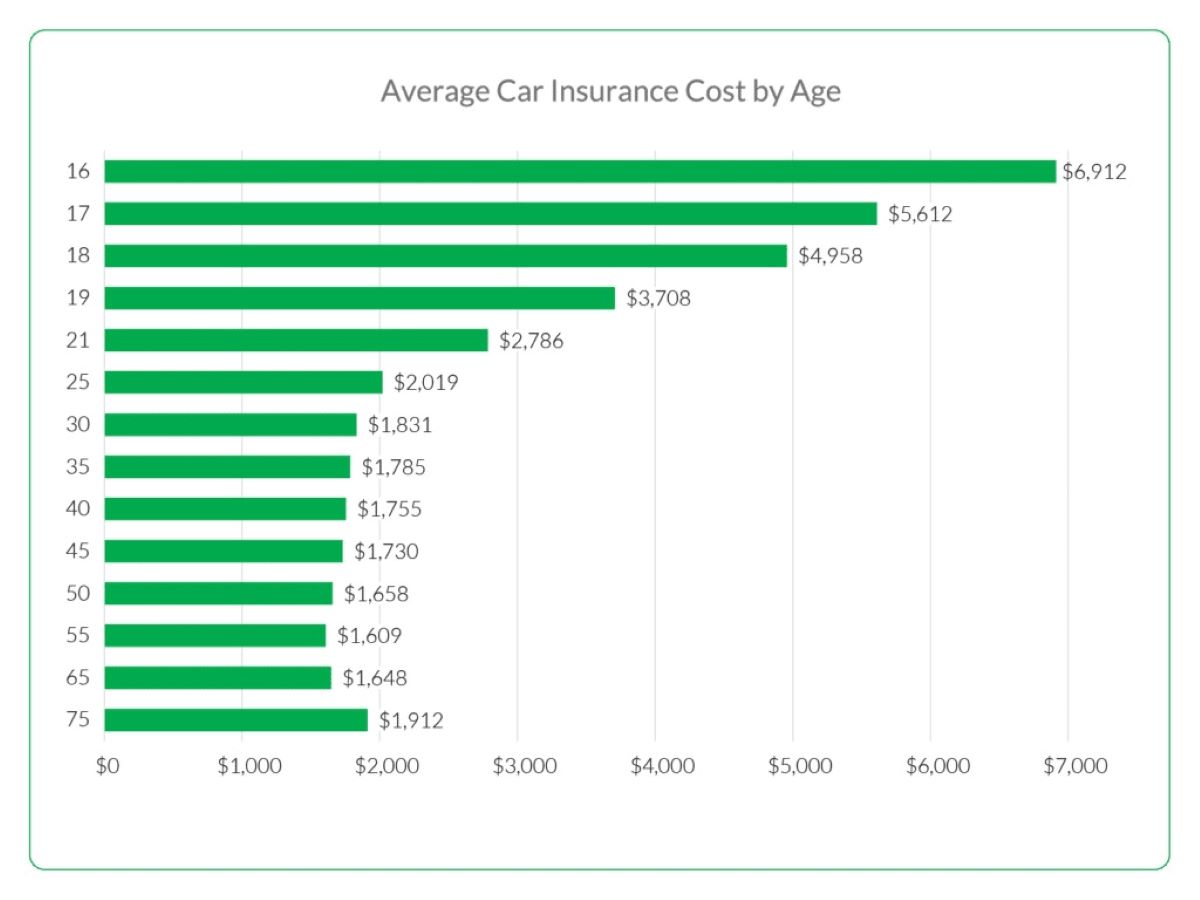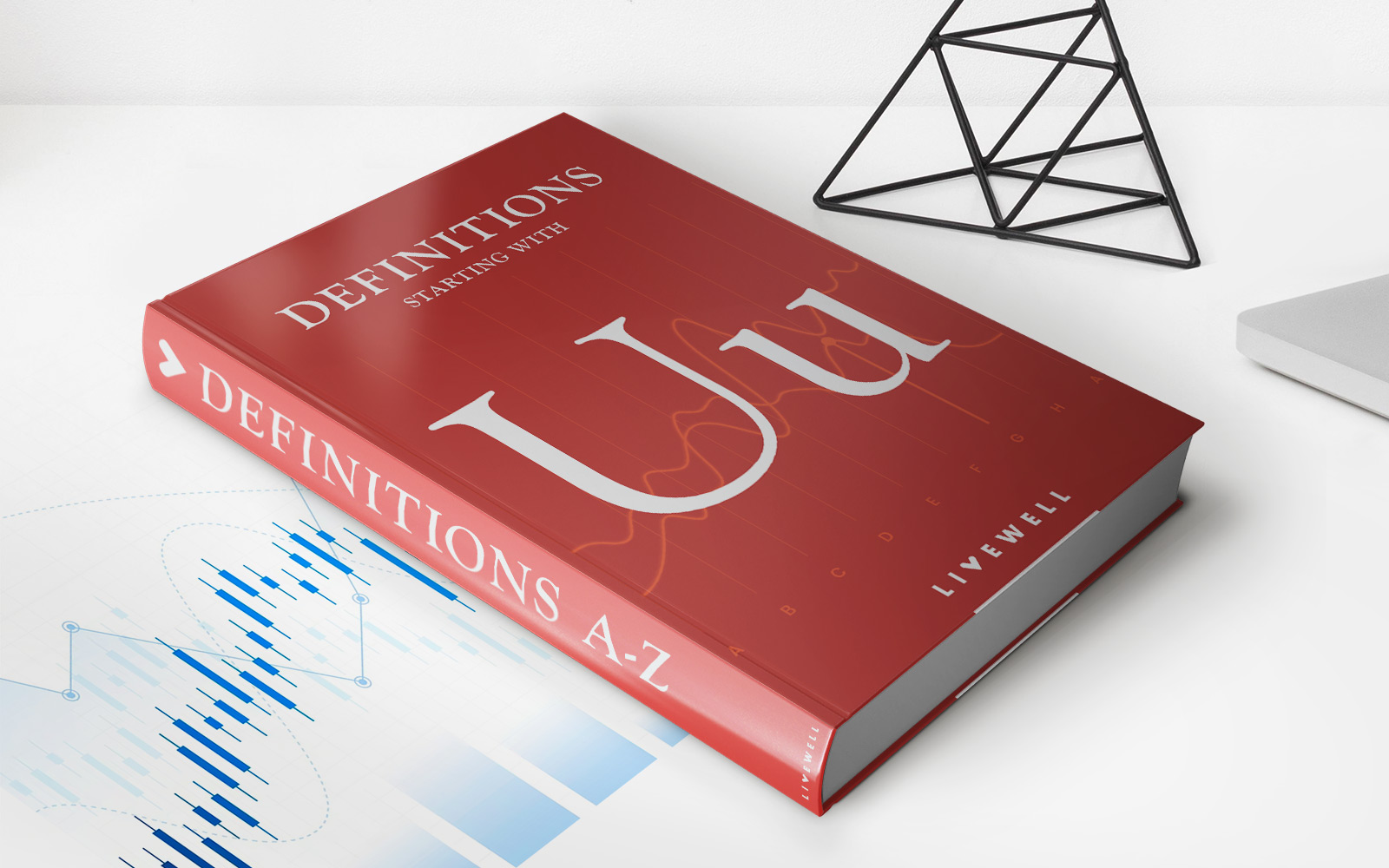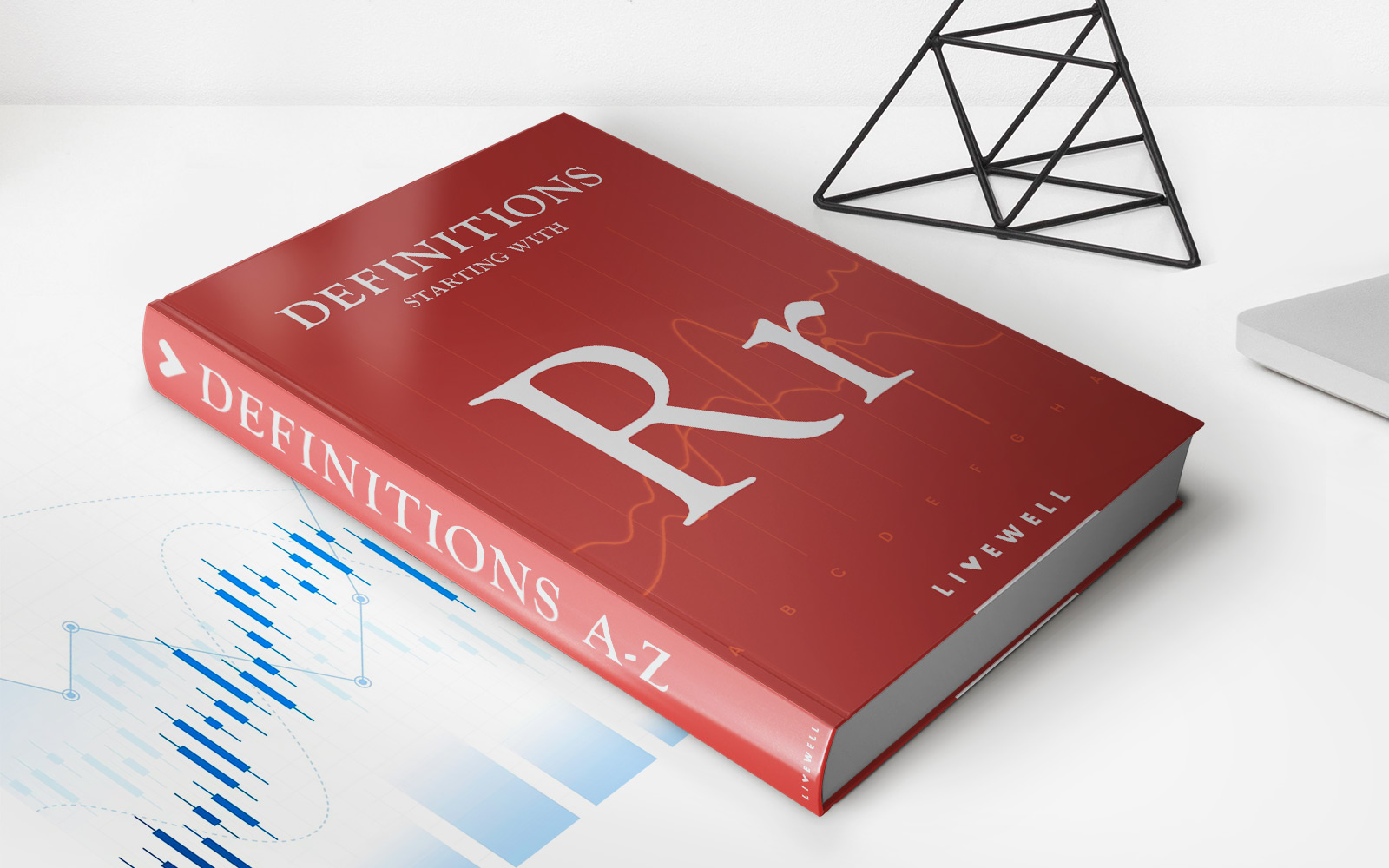Home>Finance>Why Did My Tax Return Go Down When I Added Another W2?


Finance
Why Did My Tax Return Go Down When I Added Another W2?
Published: November 3, 2023
Wondering why your tax return decreased when you added another W2? Understand the financial implications and reasons behind it.
(Many of the links in this article redirect to a specific reviewed product. Your purchase of these products through affiliate links helps to generate commission for LiveWell, at no extra cost. Learn more)
Table of Contents
Introduction
Understanding tax returns can often seem like a complex and perplexing task. It may surprise you when you find that adding another W2 form to your tax return can actually result in a decrease in your tax refund or an increase in the amount you owe. But why does this happen? In this article, we will delve into the factors that can affect your tax return and explore the possible reasons for a decrease in your tax refund when you add an additional W2.
A tax return is a document filed with the Internal Revenue Service (IRS) that outlines an individual’s income, deductions, and tax liability. It is used to determine whether an individual owes additional taxes or is entitled to a refund. When you add a second W2 to your tax return, it means that you have earned income from an additional source.
Income from multiple W2 forms can have an impact on various aspects of your tax return, such as your tax liability, deductions, and credits. Understanding how these factors interact can help you make sense of why your tax refund may decrease or why you may owe more in taxes.
In the following sections, we will explore the factors that can affect your tax return and examine the possible reasons for a decrease in your tax refund when you add another W2.
Understanding Tax Returns
Before we dive into the impact of adding another W2 to your tax return, let’s first gain a better understanding of how tax returns work. A tax return is a document that taxpayers file with the IRS to report their income, deductions, and tax liability for a specific tax year.
When you receive income, whether it is from wages, self-employment, or investments, you are required to report it on your tax return. This income is then categorized into different types, such as ordinary income, capital gains, or dividends.
After reporting your income, you can deduct certain expenses, such as mortgage interest, student loan interest, and charitable contributions. These deductions help reduce your taxable income and potentially lower your tax liability.
In addition to deductions, taxpayers can also claim tax credits, which directly reduce the amount of tax owed. Common tax credits include the Child Tax Credit, the Earned Income Credit, and the Lifetime Learning Credit.
Once all of the income, deductions, and credits have been accounted for, you arrive at your total tax liability. This is the amount of tax you owe to the government.
If your total tax liability exceeds the amount of taxes you have already paid throughout the year, you will owe additional taxes. Conversely, if the amount of taxes you have already paid exceeds your tax liability, you may be entitled to a tax refund.
Now that we have a basic understanding of tax returns, let’s explore how adding another W2 can impact your tax refund.
Adding Another W2
When you add another W2 form to your tax return, it means that you have earned income from an additional source. This can include income from a second job, a freelance gig, or income from investments. Adding another W2 can have different implications depending on various factors such as the amount of income earned, your tax bracket, deductions, and credits.
One of the key factors to consider when adding another W2 is your overall taxable income. The more income you earn, the higher your taxable income becomes. This can potentially push you into a higher tax bracket, resulting in a higher tax liability.
Additionally, each W2 form you add may have different withholding amounts. W2 forms include information about the taxes that have already been withheld from your paycheck throughout the year. If the added W2 has had lower withholding amounts or no withholding at all, it can have an impact on your overall tax liability.
In some cases, the added income from another W2 may disqualify you from certain deductions or tax credits that you may have been eligible for previously. For example, some deductions and credits have income thresholds, and if your income exceeds those thresholds, you may no longer be eligible to claim them.
Moreover, adding another W2 can affect the tax deductions you can claim. Certain deductions, such as the standard deduction or itemized deductions, have limits based on your income level. If your income increases significantly with the addition of another W2, it may reduce the amount of deductions you can claim, resulting in a higher taxable income.
It is also worth noting that tax brackets and tax rates can change from year to year. If the addition of another W2 causes your income to fall into a higher tax bracket, you may be subject to higher tax rates.
Overall, adding another W2 to your tax return can impact your tax liability and potentially decrease your tax refund. It is essential to consider factors such as overall taxable income, withholding amounts, deductions, and tax brackets when assessing the impact of the added income.
Next, we will explore some possible reasons for a decrease in your tax refund when you add an additional W2.
Factors that Affect Tax Returns
There are several key factors that can affect your tax return, including the addition of another W2 form. Understanding these factors can help shed light on why your tax refund may decrease when you add an additional source of income. Let’s explore the main factors that can impact your tax return:
- Tax Brackets: Tax brackets determine the rate at which your income is taxed. As your income increases, you may move into a higher tax bracket, resulting in a higher tax liability. Adding another W2 with additional income can push you into a higher tax bracket, which can reduce your tax refund or increase the amount you owe.
- Deductions and Credits: Deductions and tax credits can reduce your taxable income and lower your overall tax liability. However, some deductions and credits have income limitations. If your additional income pushes you above the income threshold, you may no longer qualify for certain deductions or credits, resulting in a decrease in your tax refund.
- Withholding Amounts: Each W2 form includes information about the taxes that have already been withheld from your paycheck throughout the year. If the additional W2 has lower withholding amounts or no withholding at all, it can impact your overall tax liability. Insufficient withholding may result in a smaller tax refund or potentially even owing more in taxes.
- Changes in Deductions: Adding another source of income can impact the deductions you can claim. Some deductions, such as the standard deduction or itemized deductions, have income thresholds. If your income exceeds these thresholds, your deduction amount may be reduced, leading to a higher taxable income and a decrease in your tax refund.
- Tax Liability: Your tax liability is the amount of tax you owe to the government. Adding another W2 and the associated income can increase your overall tax liability, especially if it pushes you into a higher tax bracket or reduces the deductions and credits you can claim.
Keep in mind that each taxpayer’s situation is unique, and the impact of adding another W2 to your tax return may vary. It is crucial to consider these factors and consult with a tax professional to fully understand how your specific circumstances may affect your tax return.
Next, let’s explore some possible reasons why your tax refund may decrease when you add another W2 to your tax return.
Possible Reasons for Decreased Tax Return
When you add another W2 form to your tax return, it is possible that your tax refund may decrease or that you may owe more in taxes. Several factors can contribute to this outcome. Let’s explore some possible reasons for a decreased tax return:
- Higher Tax Bracket: Adding another source of income can push you into a higher tax bracket, resulting in a higher tax liability. As a result, your tax refund may decrease or you may owe more in taxes.
- Reduced Deductions: Additional income can affect the deductions you can claim. Some deductions have income limitations, and if your income exceeds those limits, your deduction amount may be reduced. This can lead to a higher taxable income and a decrease in your tax refund.
- Changes in Tax Credits: In some cases, adding another W2 may impact your eligibility for certain tax credits. Some credits have income thresholds, and if your income surpasses those thresholds, you may no longer qualify for the credits. Losing out on these credits can result in a decreased tax refund.
- Inadequate Withholding: The withholding amounts on your W2 forms determine how much tax is withheld from your paychecks throughout the year. If the additional W2 has lower withholding or no withholding at all, it may lead to insufficient tax payments. This can result in a smaller tax refund or even an amount owed.
- Increased Tax Liability: Additional income can increase your overall tax liability. As you earn more, the amount of taxes you owe may exceed the amount already paid through withholdings. This can lead to a decrease in your tax refund or a higher tax payment.
It is important to note that while these are some common reasons for a decreased tax return, each individual’s situation is unique. Various factors, such as income levels, deductions, and credits, can interact differently and impact your tax return outcomes. It is recommended to consult with a tax professional to fully understand how adding another W2 may affect your specific tax situation.
Next, let’s discuss the impact of additional income on your tax liability.
Impact of Additional Income on Tax Liability
The addition of another W2 form and the associated income can have a significant impact on your tax liability. It is essential to understand how this additional income may affect your tax situation. Here are a few key points to consider:
Tax Brackets and Rates: When you earn additional income, it may push you into a higher tax bracket, resulting in a higher tax rate. The tax brackets determine the percentage of income that will be taxed at each rate. As a result, your overall tax liability increases with the addition of more income.
Higher Taxable Income: The more income you earn, the higher your taxable income becomes. This means that a larger portion of your income is subject to taxation. With additional income, your taxable income increases, which can result in a higher tax liability.
Reduced Deductions and Credits: Some tax deductions and credits have income limitations. As your income increases, you may exceed these limits, reducing or eliminating your eligibility for certain deductions and credits. This can lead to a higher taxable income and an increased tax liability.
Alternative Minimum Tax (AMT): The AMT is an additional tax calculation designed to prevent high-income taxpayers from avoiding certain taxes. If your additional income pushes your overall income into a higher bracket, you may be subject to the AMT. This can further increase your tax liability.
Self-Employment Taxes: If your additional income comes from self-employment or freelance work, you may be subject to self-employment taxes. These taxes include the employer and employee portions of Social Security and Medicare. Self-employment taxes can increase your overall tax liability.
Adjustments to Withholding: It’s crucial to evaluate your withholding amounts after adding another W2 to avoid potential underpayment penalties. If your additional income significantly increases your overall income, you may need to adjust your withholding to ensure sufficient tax payments throughout the year.
Understanding the impact of additional income on your tax liability can help you better prepare for any potential changes in your tax return. It is advisable to consult with a tax professional to assess the specific implications of your additional income and ensure accurate tax planning and compliance.
Next, we will discuss how changes in deductions and credits can affect your tax liability.
Changes in Deductions and Credits
When you add another W2 form to your tax return, it can have an impact on the deductions and credits you can claim. Understanding how these changes can affect your tax liability is essential. Here are some key points to consider:
Standard Deduction vs. Itemized Deductions: Adding another source of income may influence your choice between taking the standard deduction or itemizing your deductions. The standard deduction is a fixed amount determined by the IRS and is available to all taxpayers. Itemized deductions, on the other hand, allow you to deduct specific expenses like mortgage interest, state and local taxes, and medical expenses. If your income increases significantly, it may be more advantageous to utilize itemized deductions to reduce your taxable income.
Phase-Outs and Limitations on Deductions: Some deductions have income phase-outs or limitations. As your income increases with the addition of another W2, you may find that you are no longer eligible for certain deductions or that the deductible amount is reduced. These phase-outs and limitations can impact your overall tax liability.
Income-Based Tax Credits: Tax credits can provide direct reductions in your tax liability. However, some credits, such as the Earned Income Credit or the Child Tax Credit, have income limitations. If your additional income pushes you above the eligibility thresholds, you may no longer qualify for these credits, resulting in a higher tax liability.
Education-Related Deductions and Credits: If you or your dependents are pursuing higher education, you may be eligible for education-related deductions or credits. Adding another W2 can potentially affect your eligibility for these education-related tax benefits. It is important to understand how your additional income may impact these deductions and credits.
Phase-Outs and Limitations on Tax Credits: Just like deductions, some tax credits also have phase-outs and income limitations. As your income increases, you may find that the amount of credit you can claim is reduced or eliminated. This can result in a higher tax liability.
It is important to carefully evaluate how the addition of another W2 impacts your deductions and credits. Keep in mind that each deduction and credit has specific rules and limitations. Consulting with a tax professional can help you navigate these complexities and ensure that you claim all available deductions and credits, optimizing your tax outcome.
Next, we will discuss adjustments to withholding and changes in tax brackets.
Adjustments to Withholding and Tax Bracket
Adding another W2 form to your tax return may require adjustments to your withholding and can impact your tax bracket. Understanding these adjustments is crucial to ensure accurate tax payments and avoid any surprises when filing your tax return. Here are some key points to consider:
Withholding Adjustments: Each W2 form includes information about the taxes that have already been withheld from your paycheck throughout the year. If the additional W2 has lower withholding amounts or no withholding at all, it can impact your overall tax liability. To account for the additional income, you may need to adjust your withholding to ensure enough taxes are being withheld throughout the year.
Underpayment Penalties: If your additional income significantly increases your overall income and you do not adjust your withholding accordingly, you may face underpayment penalties. Underpayment penalties occur when you have not paid enough in taxes throughout the year and owe a significant amount when filing your tax return. It is important to accurately estimate your tax liability and make the necessary adjustments to avoid these penalties.
Tax Bracket Changes: Adding another W2 and the associated income can push you into a higher tax bracket. Tax brackets determine the rate at which your income is taxed. When your income crosses into a higher bracket, the portion of your income that falls within that bracket is taxed at a higher rate. This change in tax brackets can result in a higher tax liability.
Tax Rate Changes: With an increase in income, you may also experience a change in tax rates. As your income crosses into a higher tax bracket, the tax rates applicable to that bracket will apply to a portion of your income. This change in tax rates can impact the overall amount of taxes owed.
Tax Planning Considerations: It is crucial to review your withholding and tax bracket regularly, especially when adding another W2. Adjusting your withholding accordingly can help ensure that you are making accurate tax payments throughout the year. Additionally, you may consider working with a tax professional to create a tax planning strategy that aligns with your financial goals and minimizes any potential tax liabilities.
Understanding the adjustments to withholding and changes in tax brackets can help you proactively manage your tax liability. By staying informed and making the necessary adjustments, you can avoid underpayment penalties and ensure that your tax payments are in line with your income.
Next, we will conclude our discussion and summarize the key points discussed in the article.
Conclusion
Adding another W2 form to your tax return can have a significant impact on your tax refund or the amount you owe. Understanding the factors that affect your tax return is crucial to navigate these changes and make informed decisions. Throughout this article, we have explored various aspects of how adding another W2 can impact your tax liability.
We began by understanding the basics of tax returns and the purpose they serve in reporting income, deductions, and tax liability. We then delved into the factors that can affect your tax return, including tax brackets, deductions, credits, withholding amounts, and tax liability.
We discussed how additional income can influence your tax liability, pushing you into higher tax brackets and potentially reducing your eligible deductions and credits. We also highlighted the importance of considering adjustments to withholding to ensure accurate tax payments throughout the year and avoid underpayment penalties.
It is essential to remember that each taxpayer’s situation is unique, and the impact of additional income on taxes can vary. Consulting with a tax professional can provide personalized guidance tailored to your specific circumstances and help you navigate the complexities of the tax system.
In conclusion, when adding another W2 to your tax return, it is essential to consider the potential impact on your tax liability. By understanding the changes in tax brackets, adjustments to withholding, changes in deductions and credits, you can make informed decisions to optimize your tax outcome. Being proactive in managing your tax situation will ensure accurate tax payments and help you avoid any surprises when filing your tax return.
Remember to stay informed about changes in tax laws and seek professional advice whenever necessary. By doing so, you can confidently navigate the intricacies of tax returns and ensure compliance while maximizing your tax benefits.














